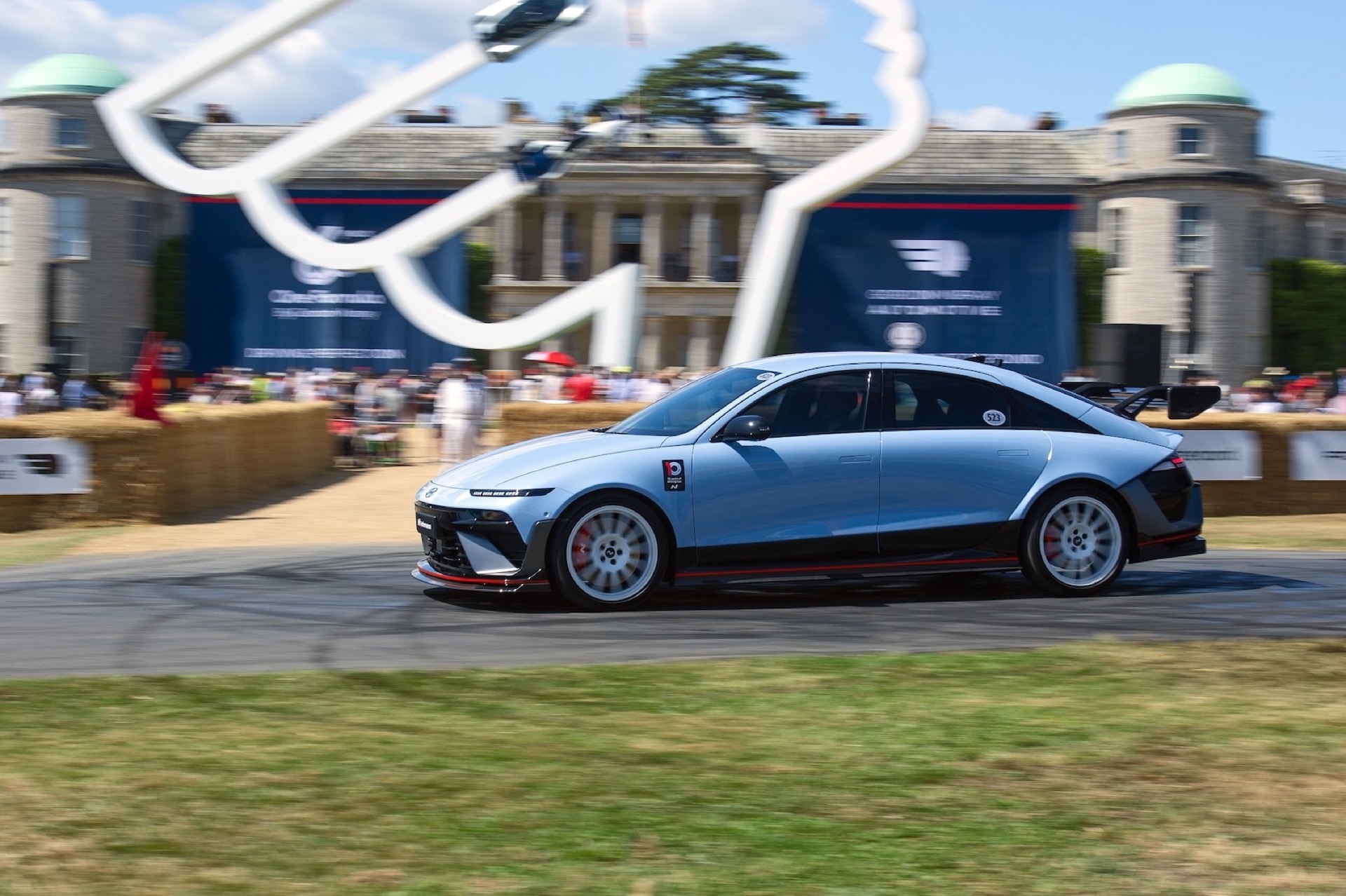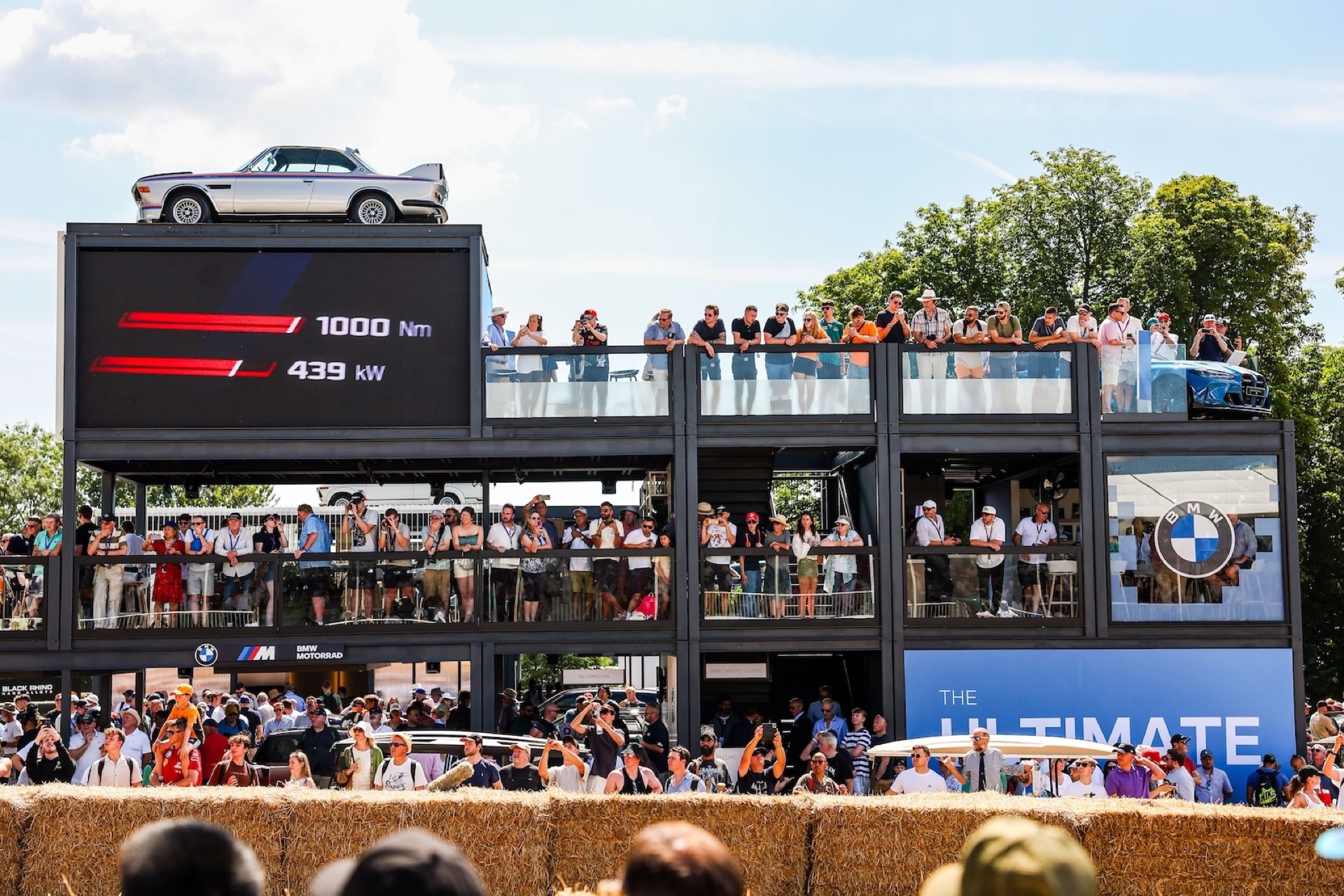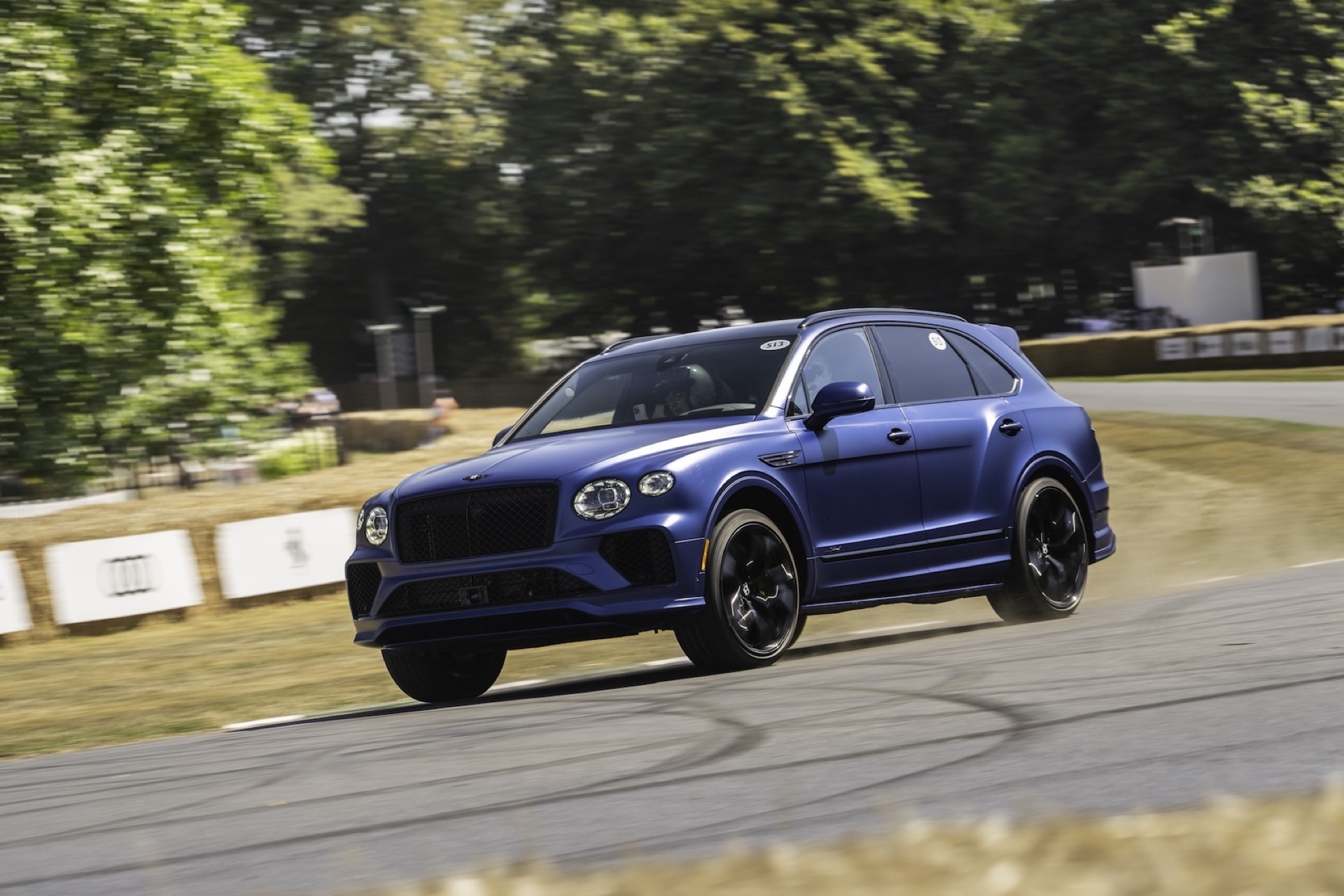Traditional motor shows in the UK are a thing of the past. Instead of wandering grey exhibition halls in Birmingham or London, enthusiasts now flock to the Duke of Richmond’s grand garden party. The Festival of Speed has long replaced the conventional auto show, with the struggling British car industry celebrating itself – and thousands cheering along.
The Goodwood Festival of Speed has, for decades, offered a unique mix of fan convention, classic car gathering, motorsport celebration and open-air motor show. At its heart lies the much-discussed hill climb: a narrow, two-kilometre ribbon of tarmac winding up a grassy slope with little more than two significant corners. Racing cars past and present, prototypes, new models and rarities blast up the course in under a minute, cheered on by tens of thousands of spectators. Whether powered by petrol or electricity, the spectacle is the same. For those wanting more, a short walk leads to Goodwood’s historic circuit, where further high-octane entertainment awaits.
All of it takes place on the private estate of Lord March, now an influential figure in the British automotive world, whose event draws carmakers and executives from around the globe. After the IAA Mobility show in Munich, Goodwood has arguably become the most important automotive event in Europe, with more than 100,000 visitors descending on Sussex. Brands with performance aspirations seize the opportunity to present themselves in the best possible light beneath the (hopefully) summer sun. It may not be as glamorous or varied as Monterey Car Week in August, but Goodwood long ago outpaced the stale format of the traditional motor show. And when the weather plays along, some visitors even forget about the Wimbledon final or the looming demands of the working week.
Since the first Festival in the early 1990s, the event has thrived thanks to manufacturers bringing not only their heritage but also their latest innovations. Electric vehicles are present, but the roar of engines still dominates the experience. Legendary racing cars, past and present, are driven in anger by big-name drivers, their engines howling in a way not often heard outside Silverstone or the Nürburgring.

Hyundai’s Ioniq 6 N, producing 650 PS and capable of 260 km/h, lights up its tyres on the hill. Bentley’s new Bentayga Speed sets a new benchmark for SUVs, storming to the top in just 55.8 seconds. With 650 PS, 850 Nm and a top speed of 310 km/h on open roads, it’s anything but subtle. McLaren ups the ante with the 1,275 PS W1, showcasing the future of hybridised Formula 1 tech for the road. Then there’s the Solus GT, a sub-tonne single-seater with an 840 PS V10 — pure theatre. From Koenigsegg and Pagani to Lotus, Ferrari, Aston Martin and even Rolls-Royce with the Spectre, Goodwood becomes a stage for the fastest and loudest players in the game.
BMW celebrates five decades of the 3 Series while showcasing the Vision Neue Klasse and a near-production preview of the next iX3. The M2 CS and M3 CS Touring roar up the hill. Mercedes shows off its electric CLA, but the old Silver Arrows still draw more applause. Porsche brings the stars: Dua Lipa unveils a bespoke GT3 RS she designed for charity, and Oscar-winner Adrien Brody premieres The Intern, a behind-the-scenes documentary of the Porsche factory. But perhaps most anticipated is the dynamic debut of the all-electric Porsche Cayenne.

Lamborghini reveals the new Temerario and its GT3 racing version, set to succeed the Huracán in competition. “After the commercial and sporting success of the Huracán GT3, with 96 championships and over 200 cars sold, we always intended to bring racing versions of the Temerario to life,” says CEO Stephan Winkelmann. Meanwhile, Chinese brands — especially MG — are becoming more prominent. This year they return with production models and concept cars like the Cyberster and Cyber X.
Festival founder Charles Gordon-Lennox, the Duke of Richmond, welcomes their presence: “Last year, MG celebrated its centenary with us. Now they’re back with two major new production cars and some truly eye-catching concepts. The chance to glimpse the future of automotive design and technology is central to what makes the Festival of Speed so compelling.”


